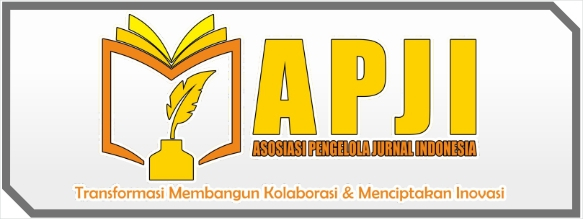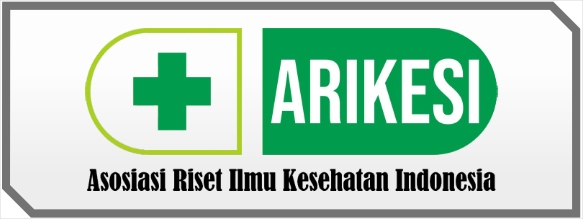Deskripsi Fatigue Pekerja Divisi Welltech XYZ
DOI:
https://doi.org/10.55606/termometer.v1i4.2469Keywords:
Work Fatigue, Weakening Activities, Weakening Motivation, Weakening PhysicalAbstract
Based on the researchers' initial observations of 17 workers in the Welltech Division of PT XYZ, it was found that 95% of the workers had health problems that could be related to work, such as cholesterol above normal limits, blood sugar above normal limits, spots on the lungs, and so on. Analyse the picture of work-related fatigue in the Welltech Division workers of PT XYZ. This study has a sample of 55 people with accidental sampling technique, type of quantitative method using analytical survey and descriptive approach. Data collection techniques used in this quantitative research are questionnaires and answer choices that have been prepared in advance. The questionnaire was distributed using Google Form. Based on the univariate results, the picture of job fatigue in workers the highest proportion of respondents experienced moderate fatigue, namely 32 people (58.2%), the picture of weakening activity in workers the highest proportion of respondents experienced moderate fatigue, namely 27 people (49.1%), the picture of weakening motivation in workers the highest proportion of respondents experienced moderate fatigue, namely 37 people (67.3%), the picture of physical weakening in workers the highest proportion of respondents experienced moderate fatigue, namely 32 people (58.2%),. It is hoped that companies will improve health programmes or work programme arrangements and then implement them for workers to prevent fatigue.
Downloads
References
Creswell, J. W. (2012). Research Design Pendekatan Kuantatif, Kualitatif dan Mixed Cetakan Ke 2. Pustaka Pelajar.
Gratcia, N. M. A., Akili, R. H., & Asrifuddin, A. (2022). Gambaran Tingkat Kelelahan Kerja Gilir Pagi dan Sore pada Pekerja di PT. Cahaya Abadi Lestari Proyek Pembangunan Jalan dan Jembatan Manado Ringroad 3. Jurnal KESMAS, 11(4), 36–42.
Juliana, M., Camelia, A., & Rahmiwati, A. (2018). Analisis Faktor Risiko Kelelahan Kerja Pada Karyawan Bagian Produksi PT. Arwana Anugrah Keramik, Tbk. Jurnal Ilmu Kesehatan Masyarakat, 9(1), 53–63.
Latar, M. A. (2017). Pengukuran Kelelahan. Jakarta : Universitas Esa Unggul.
Maharja, R. (2015). Analisis tingkat kelelahan kerja berdasarkan beban kerja fisik perawat di instalasi rawat inap rsu haji surabaya. The Indonesian Journal of Occupational Safety and Health, 4(1), 93–102.
Maulana, I., Widhiarso, W., & Dewi, G. S. (2023). Analisis Pengaruh Beban Kerja terhadap Tingkat Kelelahan Pekerja Industri Rumah Tangga Keripik Tempe. Jurnal INTECH Teknik Industri Universitas Serang Raya, 9(1), 33–41.
Melissa, T., & Dwiyanti, E. (2018). Gambaran Kelelahan Kerja Subjektif Pada Operator Mesin Produksi Pakan Ikan. The Indonesian Journal of Occupational Safety and Health, 7(2), 191–199.
Notoadmodjo, S. (2018). Metodologi Penelitian Kesehatan. Rineka Cipta.
Politon, F. V. M., & Christine. (2021). Gambaran Kelelahan Kerja Karyawan PT Paving Meriba Jaya Kelurahan Tavanjuka Kota Palu. Banua: Jurnal Kesehatan Lingkungan, 1(1), 19–25.
Pratiwi, I. P., Astuti, R. D., & Jauhari, W. A. (2019). Analisis Beban Kerja dan Kelelahan Kerja pada Pegawai Bagian Penyelenggaraan E-Government. Seminar dan Konferensi Nasional IDEC, 1(1), 1–8.
Putrisani, F. S., Nugraha, A. E., & Herwanto, D. (2023). Analisis Kelelahan Kerja Subjektif Dengan Menggunakan Kuesioner Subjective Self Rating Test. String (Satuan Tulisan Riset dan Inovasi Teknologi), 7(3), 258–266.
Rizki Belia, & Handayani, P. (2020). Faktor-Faktor Yang Mempengaruhi Kelelahan Kerja Pada Pengemudi Bus Primajasa Trayek Balaraja – Kampung Rambutan. Health Publica Jurnal Kesehatan Masyarakat, 1(1), 44–51.
Shofi, M., & Erwandi, D. (2022). Hubungan Antara Aspek Psikososial Dengan Kelelahan Multidimensi Akibat Kerja Pada Pekerja Migas PT.X Selama Pendemi Covid-19. Prepotif Jurnal Kesehatan Masyarakat, 6(1), 903–913.
Sprajcer, M., Thomas, M. J. W., Sargent, C., Crowther, M. E., Boivin, D. B., Wong, I. S., Smiley, A., & Dawson, D. (2021). How effective are Fatigue Risk Management Systems (FRMS)? A review. Accident Analysis and Prevention, 1(1), 1–14. https://doi.org/10.1016/j.aap.2021.106398
Tarwaka, Bakri, S. H. A., & Sudiajeng, L. (2014). Ergonomi Untuk Keselamatan, Kesehatan Kerja dan Produktivitas. Surakarta: Uniba Pers.
Downloads
Published
How to Cite
Issue
Section
License
Copyright (c) 2023 Hari Prayogo, Fierdiana Yusvita, Rini Handayani, Veza Azteria, Cut Alia Keumala Muda

This work is licensed under a Creative Commons Attribution-ShareAlike 4.0 International License.










